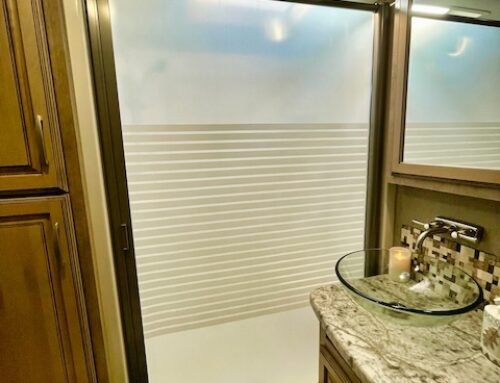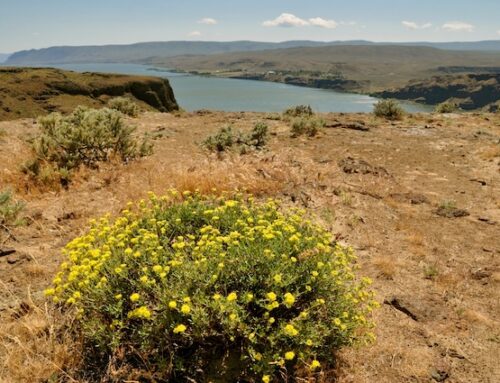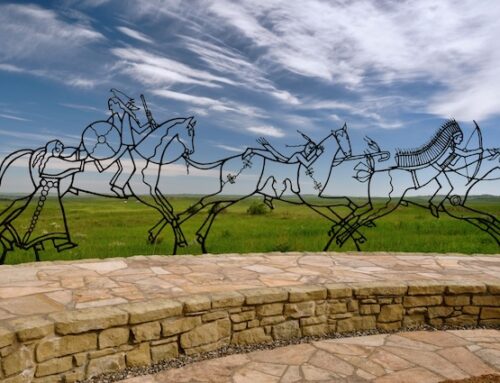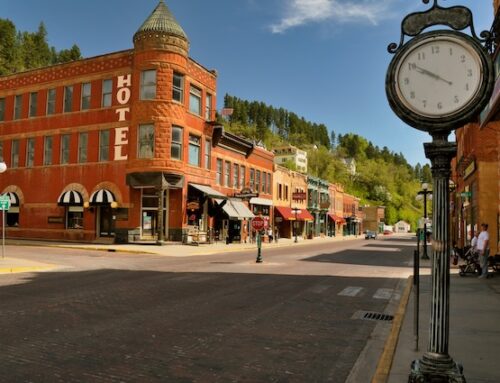Following the Gold Rush Trail Back to Whitehorse
With a bit of regret, we leave Dawson City behind. Dawson is an awesome little town, well worth taking a decent amount of time to explore, take advantage of some of the great little restaurants, gift shops and museums and visit some of the old mining claims. Click this link to see our post on Dawson City, for more information & photos.
As you head south out of Dawson you drive through miles of large, continuous piles of rock and gravel interspersed with ponds. These are mine tailings from the old dredging operations. Dredging started in the early 1900’s. Dredges were built on floating barges and used a continuous bucket chain to dig up the valley floor. The dredge moved along on a pond of its own making, digging gold bearing gravel in the front, and recovering the gold through a revolving screen washing process. The waste rock and gravel were carried out the back on a large conveyor belt or stacker, creating the large rippled gravel piles you see covering the valley floor. Operations continued right up to 1959.
Dawson City’s airport is about 10 miles/16 kms from town and is situated right on the highway, in a relatively narrow valley. The runway is gravel, but North Air does offer 737 jet service into Dawson. There is a Yukon Territorial Park just past the airport. We stayed for a couple of nights while we did some further exploration of the area. We were able to partake of some of the bounty of the land with some fresh picked wild strawberries and raspberries …they’re really small, so it takes a while to pick them!
About 25 miles/40 kms from Dawson is the junction with the Dempster Hwy. The Dempster is a gravel highway that leads 456 miles/734 kms to Inuvik in the Northwest Territories and passes through Tombstone Territorial Park. Even if you don’t drive all of the Dempster, the 44 mile/71 km drive to the park is well worth the effort.
At mile 37/60/ kms, you come to the Tintina Trench Rest Area. The Tintina Trench is a huge valley extending into Alaska and southeast across the Yukon. It is the largest fault in North America and the bedrock has shifted around 280 miles/450 kms laterally over the last 65 million years. The trench is also one of two major bird migration routes through the Yukon.
Around 97 miles/156 kms from Dawson you will pass by Moose Creek Lodge. This quirky little place is definitely worth stopping for. There are lots of interesting sculptures and old relics surrounding the lodge and a small museum in a log cabin out back, which is free. The historic log building has a restaurant offering good food, homemade pastries and a gift shop. There are also rustic cabins operated as a B&B.
The first major river crossing you come to on the way down from Dawson is the Stewart River at mile 111/179 kms. Stewart Crossing was established as a trading post and later a roadhouse was built here and it also became a fuel stop for river boats. Fuel is available here. This is also the junction with Yukon Hwy 11, The Silver Trail, which leads to the town of Mayo and Keno City. We explored these areas 2 years ago. Click this link: Keno City.
Tatchun Creek Campground is a Yukon Terretorial campsite right on Tatchun Creek at mile 205/330 kms.. Two years ago we stayed there, but this year I went for a walk down a small gravel road on the other side of the highway, which led to the Yukon River. There is a beautiful old campground/fish camp? here – and since there was no one else there we decided to move into it. We had a spectacular view of the Yukon River, right at the junction of Tatchun Creek. While we were there a severe thunderstorm rolled through late in the afternoon, bringing torrential rains and high winds. It snapped a large tree off right behind our RV … close call!
Just up the road from the campsite, at mile 207/333 kms, is the look-out, interpretive signs and the trail leading to Five Finger Rapids. The rapids are named for the five channels that are formed by rocky islets in the river. These rapids were a serious navigational challenge to the riverboats which had to winch themselves upstream through the rapids on a steel cable. There is a long staircase (219 steps) down to the hiking trail, which leads to the rapids.
The next major river crossing & community is Pelly Crossing at 156 miles/250 kms where you can find fuel, groceries, laundry, showers and camping. Just before driving into the community you cross over the Pelly River Bridge. Pelly Crossing was established as a ferry crossing and construction camp for road crews working on the Klondike Highway in the early 1950’s. Just downriver from here is Fort Selkirk which was established in the late 1800’s at the site of a seasonal trading outpost. The First Nations were drawn to the site by the facilities and jobs at nearby wood camps and on paddle wheelers, and over the years it became a thriving community. With the completion of the highway, Fort Selkirk was virtually abandoned and the Selkirk First Nations moved to Minto and eventually, Pelly Crossing.
The junction of the Campbell Hwy which leads to Faro, Ross River and Watson Lake is at mile 220/354 kms, just before Carmacks. The road is paved to Ross River, but is gravel beyond that and while it is 20 miles/32kms shorter than driving Watson Lake to Whitehorse and up the Klondike Highway to Dawson City, it is a much longer drive time-wise due to the winding road conditions and long stretches of gravel.
The largest town along the Klondike Highway is Carmacks with a population of 444, and here you cross the Yukon River at mile 221/356 kms. There are a couple of gas stations, a cafe & post office set up in the old RCMP barracks building, a restaurant and Hotel Carmacks. Carmacks is also a major paddling destination. It is a popular end point for those paddling from Whitehorse and a starting point for those heading for Dawson or wanting to paddle through Five Finger Rapids. Carmacks was a major stopover on the old Whitehorse to Dawson Trail and there a few interesting old log buildings still around, some of them restored some falling into ruin. The most interesting is the Carmack’s Roadhouse, and right across the road from that is the Whitepass & Yukon Stables. In 1902, the Whitepass & Yukon Route was awarded the contract to build a winter road from Whitehorse to Dawson. The stables housed a large herd of horses until the 1920’s when they started using a tracked vehicle. The roadhouse was one of many built along the road every 30 miles. The roadhouse was a two story, 12 room building with a stable. Carmacks also has a 1 mile/1.6 km boardwalk trail running along the edge of the Yukon River.
The next roadhouse you come to on the Klondike Hwy is Montague Roadhouse at mile 243/391 kms. This is a fairly impressive 2 story log building although the roof is no longer there. There is a rest area at this location as well.
If you’re getting hungry for a coffee and a snack or a full-blown meal, your next stop will be Braeburn Lodge, famous for its enormous cinnamon buns, and I mean enormous. One of these bad boys could feed an entire family for the entire day or longer! No, we didn’t try one.
You pass by a few more Yukon Territory campsites on the way down to Whitehorse. We popped into Lake Laberge Campsite to have a look. Lake Laberge is formed by a widening in the Yukon River, and it is big, 40 miles/64 kms long. If you are familiar with Robert Service, this lake was in his famous poem, “The Cremation of Sam McGee”. “The Northern Lights have seen queer sights. But the queerest they ever did see was the night on the marge of Lake Lebarge I cremated Sam McGee.”
The final point of note on the highway is the junction with Takhini Hot Springs Road at mile 320/515 kms, just 3 ½ miles from the junction with the Alaska Hwy. . There is fuel, groceries and a café at the junction as well. By the way, it is worth checking out Takhini Hot Springs.
Update: Takhini Hot Springs is now Eclipse Nordic Hotsprings. The facility has been completely rebuilt and we can’t wait to come back for a visit!!
After you turn left onto the Alaska Highway, Whitehorse is just 10 miles/16 kms down the road. For more on Whitehorse see our 2014 post: Whitehorse.


























Yukon’s original Highway 3, the Dawson-Mayo Road, was opened in September 1955 between Stewart Crossing and Dawson City.
Did you happen to note exactly where the Carmacks post office is, perhaps in terms of latitude and longitude? I have been looking to add it to our map database on OpenStreetMap.org, but have not been able to pin it down.
Here’s a link: https://www.storelocate.ca/canada-post/carmacks.html